Museums & Institutions
A Painting Nearly Destroyed in the Beirut Blast of 2020 Has Been Identified as a Long-Lost Artemisia Gentileschi—and Is Now Undergoing Restoration
The painting is now being restored at the J. Paul Getty Museum in Los Angeles.
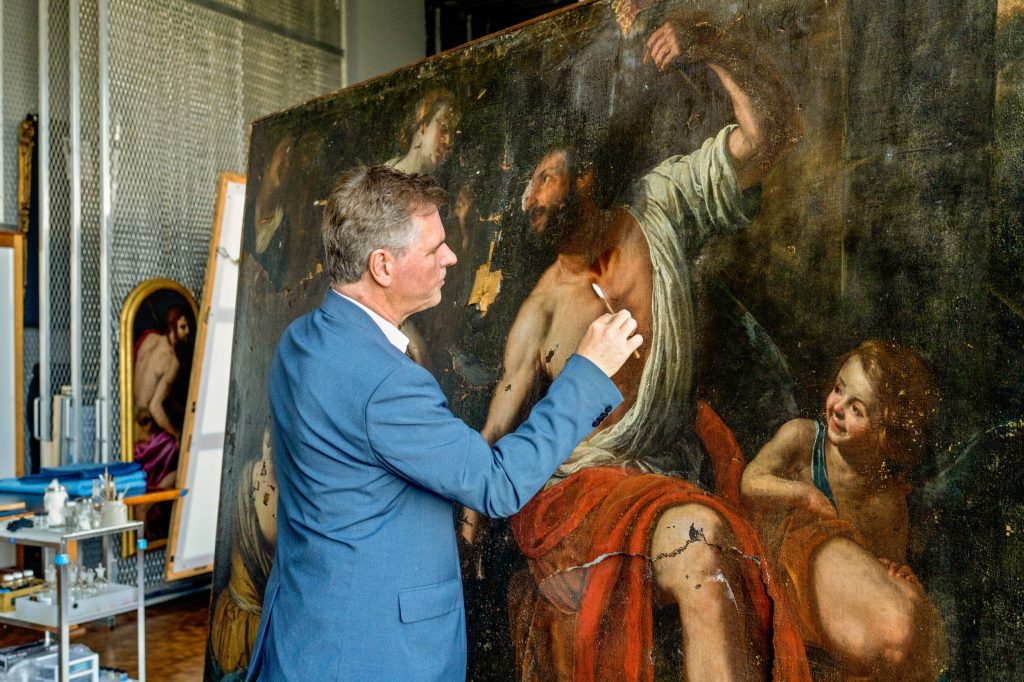
The painting is now being restored at the J. Paul Getty Museum in Los Angeles.

Sarah Cascone

The painting at Beirut’s Sursock Palace was lucky to survive the explosion in August 2020, which killed more than 200 people and left some 300,000 homeless in Lebanon’s capital city.
But in the wake of the tragedy, an art historian pulled the canvas from the wreckage. Its artist, like many of the works in the palace, wasn’t named, but he recognized it as the work of Artemisia Gentileschi, Baroque master and one of art history’s most important women artists.
Today, the painting, titled Hercules and Omphale, is at the J. Paul Getty Museum in Los Angeles, where it is undergoing conservation analysis and treatment. Once work is complete in 2024, the institution will display it alongside another rediscovered masterpiece by the artist, Lucretia, which it acquired for a record-breaking $5.3 million in 2019.
“After a devastating explosion that damaged the painting, we are honored to be entrusted with its conservation,” museum director Timothy Potts said in a statement. “Hercules and Omphale is one of the most important recent discoveries within the corpus of Artemisia Gentileschi, demonstrating her ambition for depicting historical subjects, something that was virtually unprecedented for a female artist in her day.”
Triggered by 2,700 tons of improperly stored ammonium nitrate at the Port of Beirut, the 2020 explosion caused $15 billion in property damage, including to the Sursock Palace, which is now undergoing extensive renovations. The roof of the 160-year-old cultural heritage site partially collapsed, damaging hundreds of pieces of artwork and furniture.
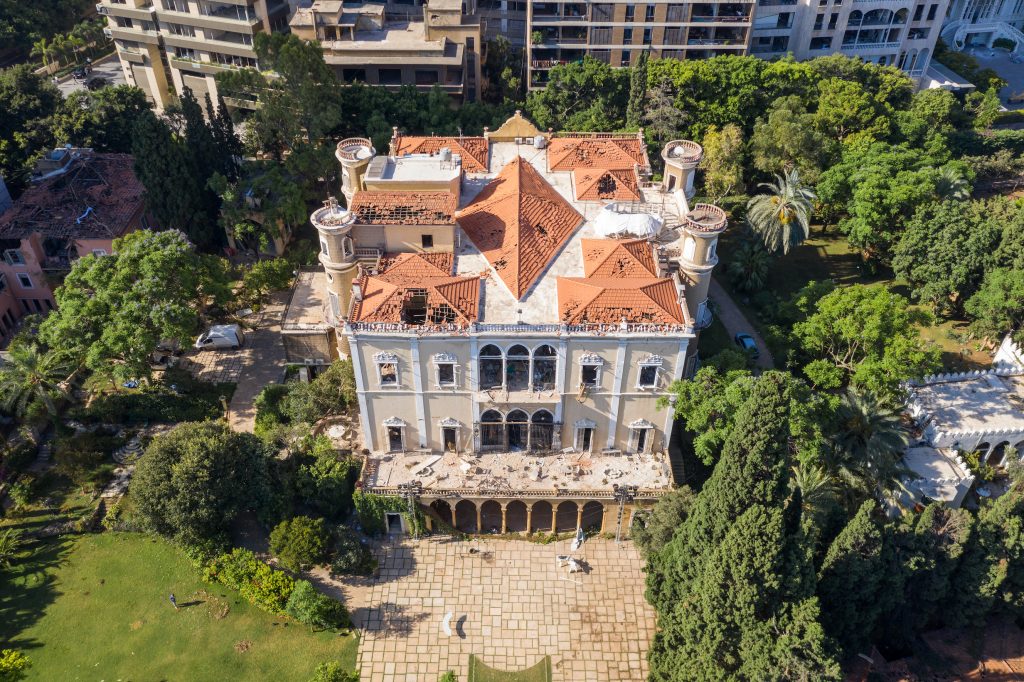
An aerial view of Sursock Palace in Beirut following the city’s 2020 explosion. Photo by Haytham Al Achkar/Getty Images.
Six days later, Lebanese art historian Gregory Buchakjian made what he called a “post-apocalypse visit” to the palace, an experience he wrote about for Apollo magazine. He mentioned that he had done his master’s thesis on the Sursock’s art collection in the early 1990s, and attributed two canvases to Gentileschi, who only has about 60 confirmed extant works.
The article brought newfound attention to his possible discovery, which had never been published. Buchakjian was invited to present his research and findings at the Medici Archive Project in Florence the following spring, making a strong case for an addition to Gentileschi’s oeuvre.
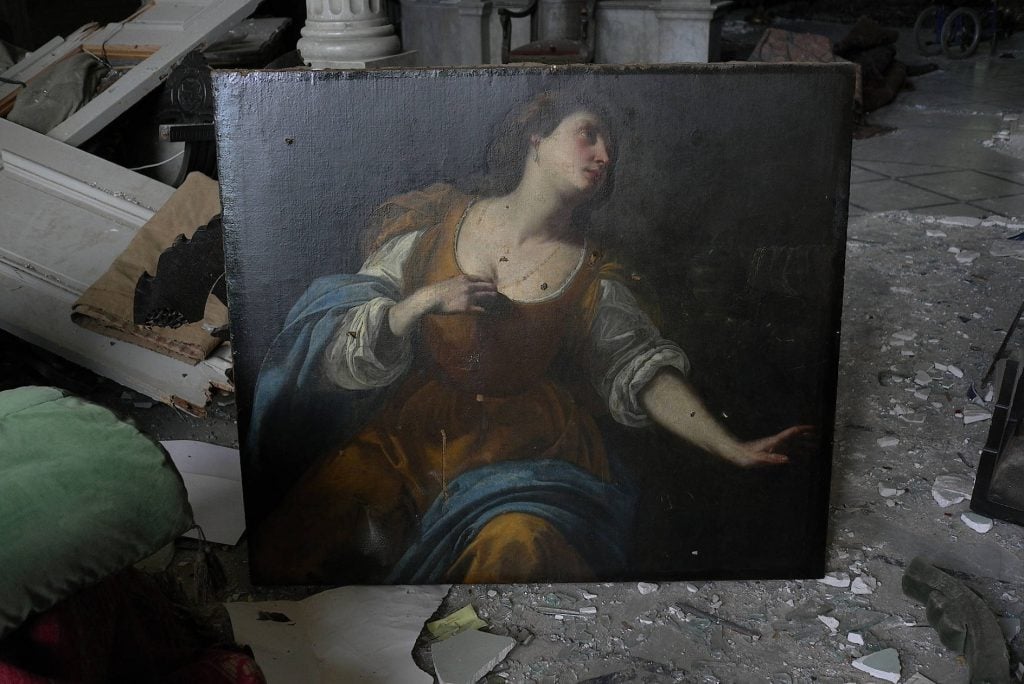
A painting identified by art historian Gregory Buchakjian at Artemisia Gentilesci’s Penitent Magdalene, as seen at Sursock Palace after the 2020 explosion in Beirut. Photo by Gregory Buchakjian, Cochrane Collection.
The jury still appears to be out on the authorship of Penitent Magdalene, which went on view in its damaged state last March at the Palazzo Real in Milan. It has since been restored and was shown earlier this year at the Musei di San Domenico in Forlì, Italy.
But a consensus has emerged for Hercules and Omphale.
“This painting is definitely by Artemisia,” Davide Gasparotto, the Getty Museum’s senior curator of paintings, who arranged for the work’s restoration and loan, told the New York Times. “It’s a very powerful, convincing painting—one of her most ambitious in terms of size and the complexity of the figures.”
A previously unknown Mary Magdalene by Artemisia Gentileschi in the Sursock Palace in Beirut was damaged in last summer's explosion. The work is displayed in its damaged state in the exhibition “Le Signore dell'Arte" in Milan (Source: ANSA) https://t.co/fdF50lbRZH pic.twitter.com/oXrVcowPCY
— Jesse M. Locker (@JesseMLocker) March 3, 2021
But the work is lucky to have survived at all, given the severity of the blast. The explosion pelted the painting with flying debris that left it severely damaged, with a 20-inch tear near Hercules’s knee. Before conservation work could begin, Getty staff had to remove large shards of glass that were still embedded in the canvas
“The devastation this painting experienced is the most serious I have ever seen, with a staggering amount of tears and paint loss, but we are working on a multi-step treatment plan that will assure that this work by Artemisia Gentileschi is once again returned to its former splendor,” Ulrich Birkmaier, senior conservator of paintings at the Getty Museum, said in an article on the museum’s blog.
This painting by Artemisia Gentileschi survived an explosion. See more: https://t.co/YLyfg90QYC pic.twitter.com/Zvt6XfIsnn
— Getty (@GettyMuseum) October 25, 2022
In addition to repairing damage caused by the explosion, the team will also carry out a long-overdue cleaning, washing away layers of discoloring varnish and dirt that have accumulated over the centuries.
The palace is the family home of Roderick Sursock Cochrane, whose 98-year-old mother, Yvonne Sursock Cochrane, died just weeks after the explosion from injuries sustained in the blast. Her parents, Alfred Sursock and Donna Maria Teresa Serra di Cassano, had amassed the palace’s impressive collection of Italian Baroque and 19th- and 20th-century Lebanese art.
Experts now believe that Hercules and Omphale dates to the 1630s, one of two works Gentileschi made of the subject. (According to the myth, Hercules was forced to serve Omphale, the queen of Lydia, doing women’s work for a year, but the two became lovers.)
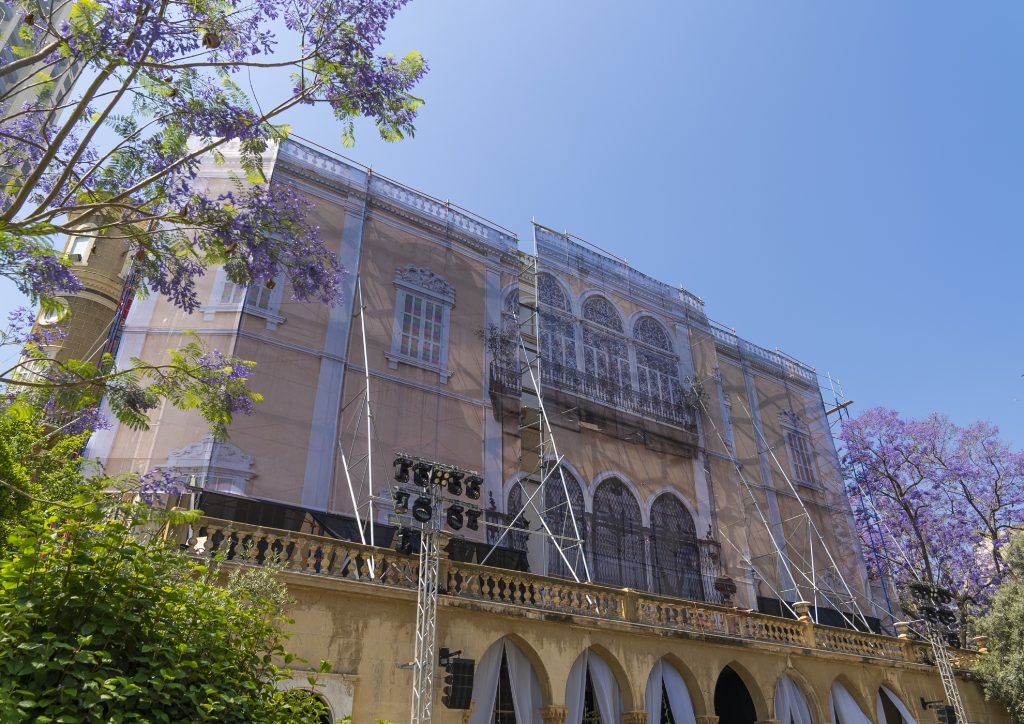
Restoration of Beirut’s Sursock Palace destroyed by the 2020 explosion. Photo by Eric Lafforgue/Art in All of Us/Corbis via Getty Images.
The first painting, commissioned on behalf of King Philip IV of Spain in 1628, is believed to have been destroyed in a fire at some point in the 18th century. The Sursock painting matches the dimensions of Gentileschi’s second version, as recorded in 1699 inventor of a collection in Naples belonging to a man named Carlo de Cárdenas.
Sursock Cochrane and his wife and daughter have been living in the guesthouse while the main palace, built by his great-grandparents, Anastasia and Moussa Sursock, is being restored to its former glory and converted into a private museum. The project, which is supported by UNESCO with funding from Switzerland and the French Ministry, is expected to cost millions of dollars, reports the Irish Times.
See more photos of the restoration work below.
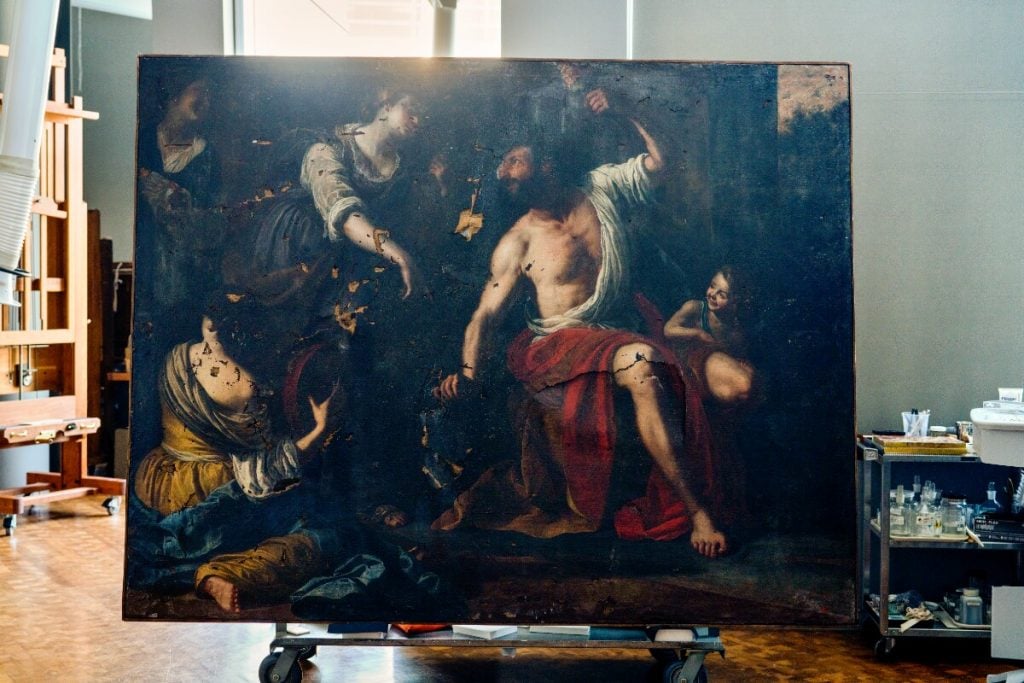
Artemisia Gentileschi’s Hercules and Omphale is being restored at the J Paul Getty Museum in Los Angeles. Photo by Cassia Davis, ©2022 J. Paul Getty Trust/Sursock Palace Collections, Beirut, Lebanon.
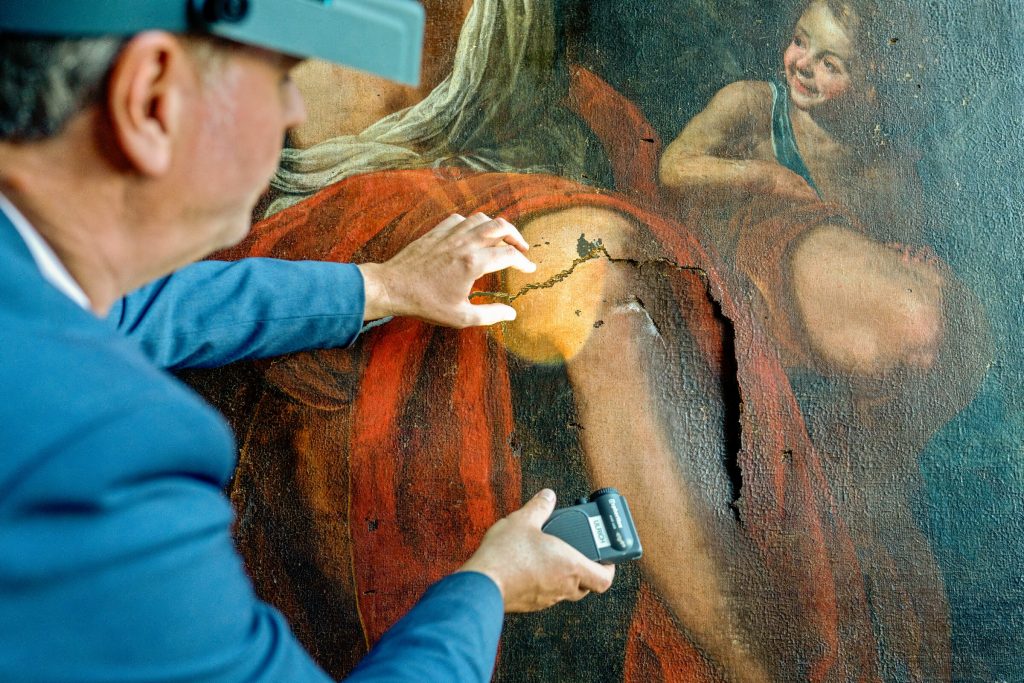
Ulrich Birkmaier examining a heavily damaged section of Artemisia Gentileschi’s Hercules and Omphale at the J Paul Getty Museum in Los Angeles. Photo by Cassia Davis, ©2022 J. Paul Getty Trust/Sursock Palace Collections, Beirut, Lebanon.
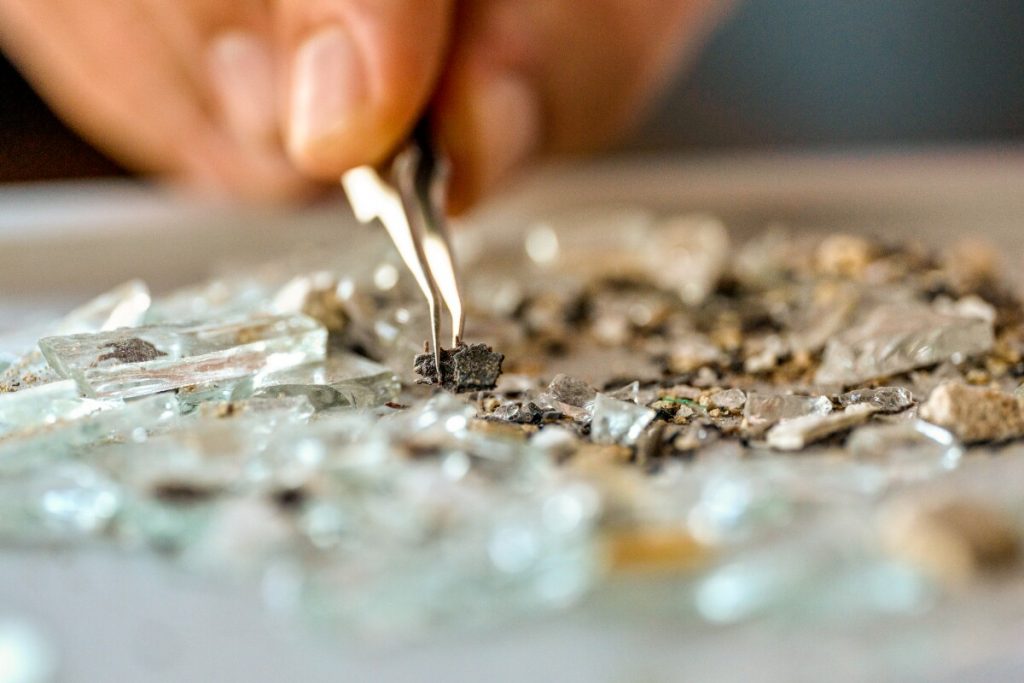
A paint fragment among glass removed from Artemisia Gentileschi’s Hercules and Omphale at the J Paul Getty Museum in Los Angeles. Photo by Cassia Davis, ©2022 J. Paul Getty Trust.

Ulrich Birkmaier uses a swab in the restoration of Artemisia Gentileschi’s Hercules and Omphale at the J Paul Getty Museum in Los Angeles. Photo by Cassia Davis, ©2022 J. Paul Getty Trust/Sursock Palace Collections, Beirut, Lebanon.
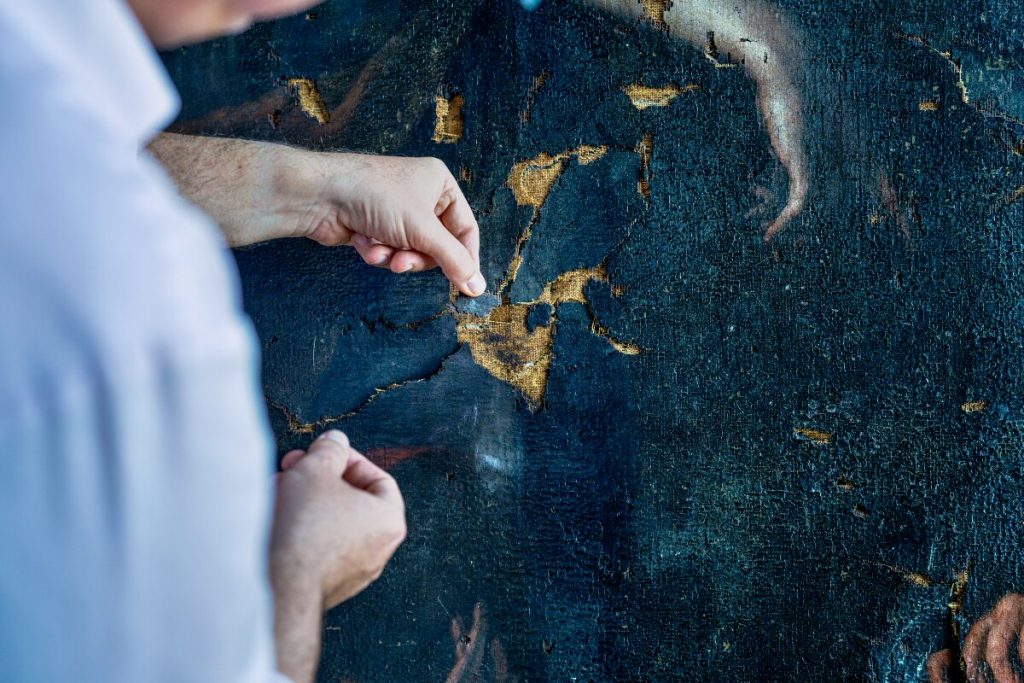
Ulrich Birkmaier attempts to match a paint fragment to losses in Artemisia Gentileschi’s Hercules and Omphale at the J Paul Getty Museum in Los Angeles. Photo by Cassia Davis, ©2022 J. Paul Getty Trust/Sursock Palace Collections, Beirut, Lebanon.
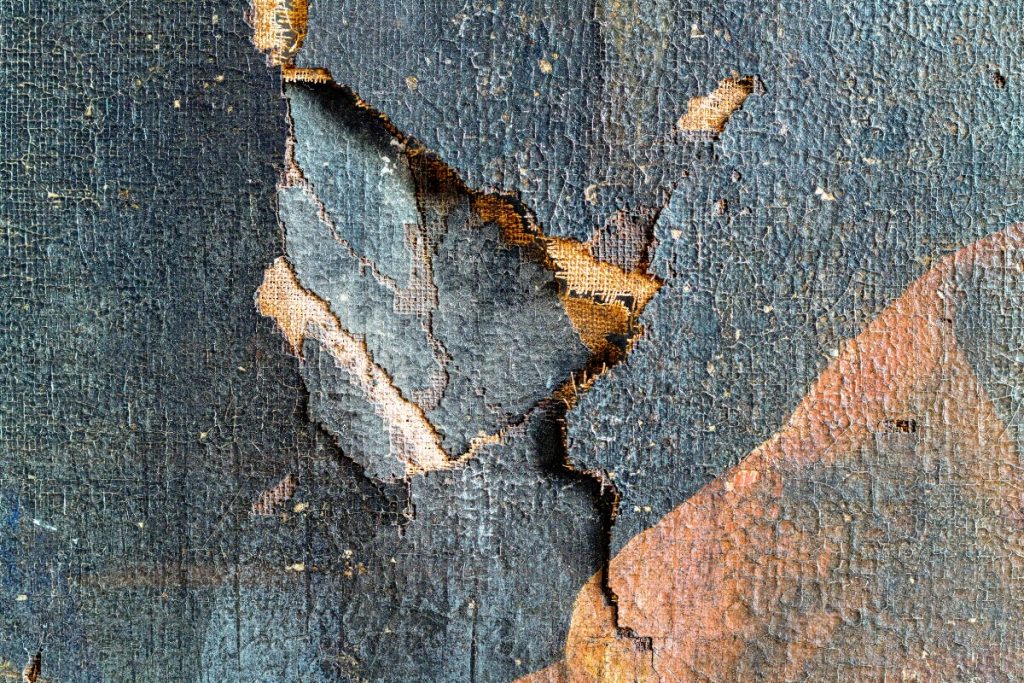
A detail of Artemisia Gentileschi’s Hercules and Omphale, damaged in the 2020 Beirut explosion. Photo by Cassia Davis, ©2022 J. Paul Getty Trust/Sursock Palace Collections, Beirut, Lebanon.
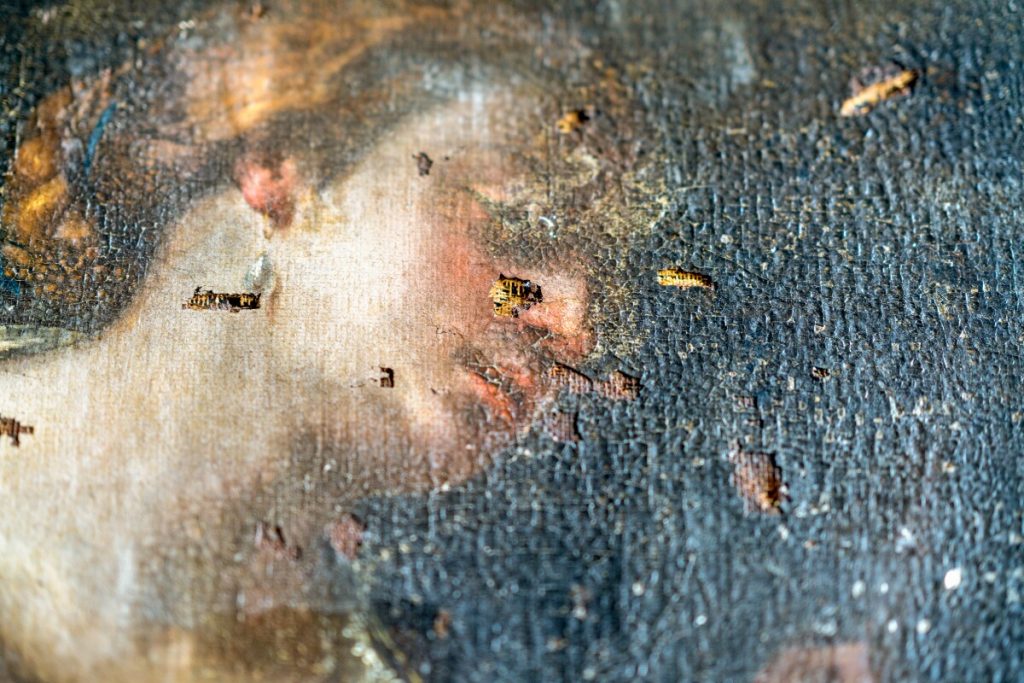
A detail of Artemisia Gentileschi’s Hercules and Omphale, damaged in the 2020 Beirut explosion. Photo by Cassia Davis, ©2022 J. Paul Getty Trust/Sursock Palace Collections, Beirut, Lebanon.
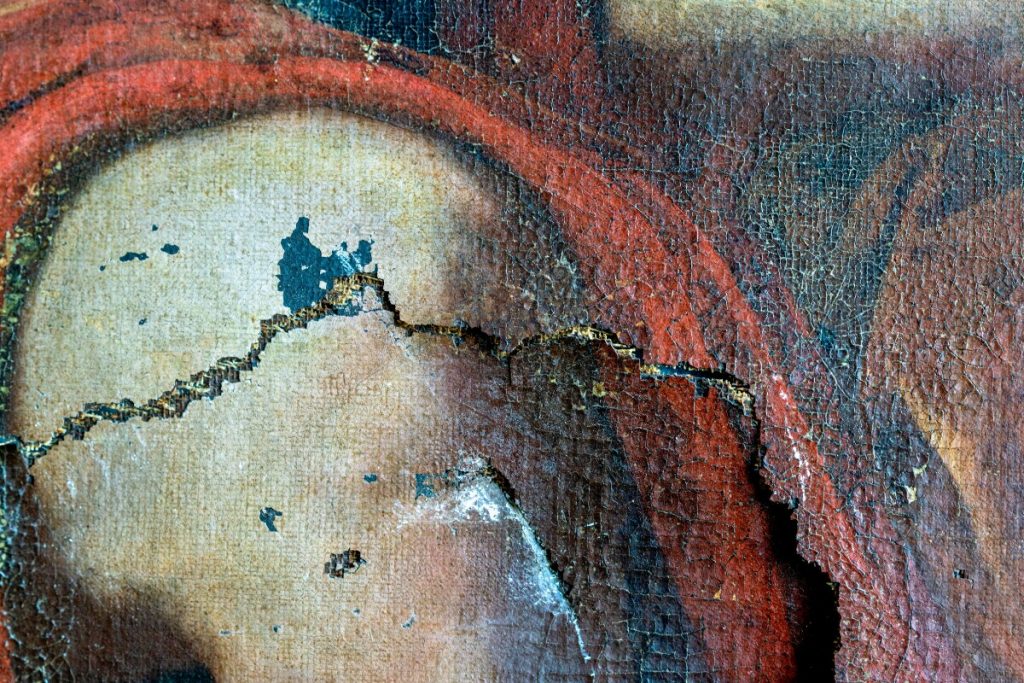
A detail of Artemisia Gentileschi’s Hercules and Omphale, damaged in the 2020 Beirut explosion. Photo by Cassia Davis, ©2022 J. Paul Getty Trust/Sursock Palace Collections, Beirut, Lebanon.